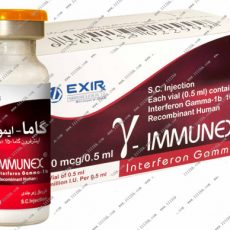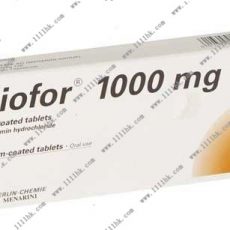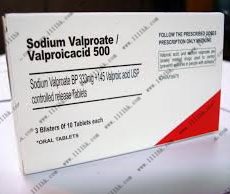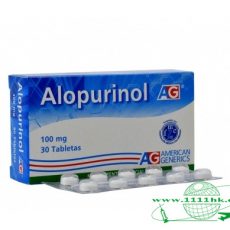-
Pompe disease
Alpha-glucosidase
【Product name】Myozyme
[English common name]Alglucosidase alfa
[Chinese common name]Alpha-glucosidase
[English name]α-Glucosidase
[Chinese other name]Alpha-glucosidase
[indications]For the use of the specific lysosomal glycogenase indicated in the patient's Pompe disease (GAA deficiency).
【Dosage】20 mg/kg by intravenous infusion every 2 weeks
[Storage]Myozyme was stored at a refrigerated temperature of 2° to 8°C (36° to 46°F).Do not use Myozyme after the expiration date on the vial.
[Tips] Some of the information on this site comes from the Internet and is only used internally by pharmacists or medical staff. It is not a substitute for doctors to diagnose face to face. Please consult a professional pharmacist for specific medications. Please refer to the actual product manual or the actual product for the product content.
-
other
--galactosidase
【Product name】 Fabrazyme
[English common name]Agalsidase beta
[Chinese common name]--galactosidase
[English name]beta-Galactosidase
[Chinese other name]Beta-galactosidase
[indications]Fabry disease.
【Dosage】As agarase beta (genetic recombination), 1 mg / kg body weight is usually administered intravenously every other week.
[Storage] Please store at 2-8 °C and use within 24 hours.
[Tips] Some of the information on this site comes from the Internet and is only used internally by pharmacists or medical staff. It is not a substitute for doctors to diagnose face to face. Please consult a professional pharmacist for specific medications. Please refer to the actual product manual or the actual product for the product content.
-
other
--galactosidase A
【Product name】Fabrazyme
[English common name]Agalsidase beta
[Chinese common name]Galactosidase
[English name]beta-Galactosidase, Lactase, Galactosidase
[Chinese other name]--galactosidase, beta-galactosidase
[Indications] Fabrazyme is indicated for long-term enzyme replacement therapy in patients diagnosed with Fabry disease (α-galactosidase A deficiency).
Fabrazyme is suitable for adults, children and adolescents aged 8 and over.【Usage and Dosage】 Dosimetry
The recommended dose of Fabrazyme is 1 mg / kg body weight, administered once every 2 weeks as an intravenous infusion.
Lower dosing regimens have been used in clinical studies. In one of the studies, in adult male patients, the initial dose was 1.0 mg / kg every 2 weeks, and after 6 months, 0.3 mg / kg every 2 weeks may be in some cell types in some patients. Maintenance of GL-3 clearance was maintained; however, the long-term clinical relevance of these findings has not been established.
The initial infusion rate should not exceed 0.25 mg/min (15 mg/hr) to minimize the possibility of infusion-related reactions. After establishing patient tolerance, the infusion rate can then be gradually increased following subsequent infusion.
For patients who can tolerate their infusion, consider infusing Fabrazyme at home.
The decision to transfer the patient to a home infusion should be made after the assessment
The recommendation of the attending physician. Patient experiences adverse events at home
Infusions need to stop the infusion process immediately and seek professional attention in health care. Subsequent infusions may need to be performed in a clinical setting. Dosage and infusion rates should remain the same at home, and professional care should not be changed without medical care supervision.
Special population
Renal insufficiency
Patients with renal insufficiency do not need to adjust the dose.
Liver damage
No studies have been conducted on patients with hepatic insufficiency.
elderly
The safety and efficacy of Fabrazyme in patients over 65 years of age has not been established, and no current dosing regimen is recommended in these patients.
Pediatric population
The safety and efficacy of Fabrazyme in children between 0 and 7 years of age has not been established.
The currently available data is described in sections 5.1 and 5.2, but no recommendations for posology apply to children between the ages of 5 and 7. Children from 0 to 4 years old do not have access to data. Children aged 8-16 do not need to adjust the dose.[Storage] Store in the refrigerator (2 ° C – 8 ° C).
[Tips] Some of the information on this site comes from the Internet and is only used internally by pharmacists or medical staff. It is not a substitute for doctors to diagnose face to face. Please consult a professional pharmacist for specific medications. Please refer to the actual product manual or the actual product for the product content.
-
Huntington's disease
Tebufenazin
【Product name】Xenazine
[English common name]Tetrabenazine
[Chinese common name]Tebufenazin
[English name]Ro 1-9569
[Chinese other name]
[indications]Treatment of choreaThrowing and other motor hyperactivity disorders.
[Usage and Dosage] Oral administration. Taking the medicine is not affected by eating.
Adult: Initial amount: 12.5 mg, 2 times a day, gradually increased to 12.5-25 mg, 3 times a day. If the maximum dose is not improved for 7 days, the drug can be used.
Old man: Initial amount: 12.5 mg / day, then gradually increase the dose.
Moderate to severe tachycardia: Adult: initial dose: 12.5 mg / day, according to the reaction to increase the dose.
Any questions, please follow the doctor's advice![Storage] Store at 25oC (77oF); Allow 15-30oC (59-86oF) offset.
[Tips] Some of the information on this site comes from the Internet and is only used internally by pharmacists or medical staff. It is not a substitute for doctors to diagnose face to face. Please consult a professional pharmacist for specific medications. Please refer to the actual product manual or the actual product for the product content.
-
other
Cloweidipine butyrate
【Product name】Cleviprex
[English common name]Clevidipine
[Chinese common name]Cloweidipine butyrate
[English name]
[Chinese other name]
[Indications] For the treatment of hypertension that is not suitable for oral or oral administration, it can also be used to treat acute blood pressure after surgery.
[Usage and Dosage] Monitoring
When injecting this product, the patient's blood pressure and heart rate should be continuously monitored until the patient's signs are stable. For patients who continue to infuse this product for a long time and have not switched to other antihypertensive drugs, at least 8 hours of rebound hypertensive hypertension monitoring should be performed after the end of the infusion. Such patients may require follow-up adjustments in blood pressure control.
Recommended dose
This product is an intravenous drug preparation, the dosage should be gradually adjusted during use to achieve the desired antihypertensive effect. The specific dose depends on the expected antihypertensive effect and the patient's response.
Starting dose:
The initial dose of intravenous infusion of this product is l ~ 2mg / hour.
Dose adjustment:
The dose can be doubled at intervals of a short time (90 seconds). When approaching the target antihypertensive effect, the increased dose should be less than double, and the time interval for adjusting the dose should be extended to 5 to 10 minutes. In general, for every 1-2 mg/hour increase in dose, the systolic blood pressure can be further reduced by 2 to 4 mmHg.
Maintenance dose:
Most patients achieve a desired therapeutic response by measuring 4 to 6 mg/hour. For patients with severe hypertension, it may be necessary to increase the dose to 32 mg / hour, but the clinical experience of this dose is limited.
Maximum dose:
The maximum dose for most patients does not exceed 16 mg/hour. Short-term medication experience with a dose of 32 mg/hour is limited. Due to the limitation of lipid intake, it is recommended that the infusion of this product within 24 hours does not exceed 1000m1 or an average of 21mg/hr. In clinical studies, 55 hypertensive patients received more than 500 ml of this product within 24 hours. Almost no infusion of this product (all doses) more than 72 hours of medication experience.
Switch to other antihypertensive drugs:
When determining the appropriate oral antihypertensive drug, you can stop using this product or gradually reduce the dose of this product. In the initial stage of oral antihypertensive drugs, the delay time of oral drug onset should be considered. Blood pressure should continue to be monitored until the desired effect is achieved.[Storage] The 50 mL expiration date is the ML filling size (2-8oC) at the time of refrigerated storage for 24 months. 100mL can be obtained for 36 months of shelf life, and the filling size when stored in cold storage. Both configurations can store up to 2 months of control room temperature as "in use" storage.
[Tips] Some of the information on this site comes from the Internet and is only used internally by pharmacists or medical staff. It is not a substitute for doctors to diagnose face to face. Please consult a professional pharmacist for specific medications. Please refer to the actual product manual or the actual product for the product content.
-
Huntington's disease
Trifluoperazine
【Product name】Trifluoperazine hydrochloride tablets
[English common name]Trifluoperazine
[Chinese common name]Trifluoperazine
[English name]
[Chinese other name]
[Indications] For all types of schizophrenia, it has an invigorating and activating effect, which is suitable for the symptoms of tension-type stupor and the symptoms of apathy and behavioral withdrawal of simple and chronic schizophrenia.
[Usage and Dosage] Oral from a small dose, once 5mg, 2 to 3 times a day. Gradually increase to 5-10mg every 3-4 days, 2 to 3 times a day. The daily dose is 15-30 mg, and the high dose is 45 mg a day.
[Storage] shading, confined storage.
[Tips] Some of the information on this site comes from the Internet and is only used internally by pharmacists or medical staff. It is not a substitute for doctors to diagnose face to face. Please consult a professional pharmacist for specific medications. Please refer to the actual product manual or the actual product for the product content.
-
Mitochondrial myopathy with hyperlactosis and stroke-like episodes (MELAS syndrome)
Adenosine triphosphate (ATP)
【Product name】Adenosine
[English common name]Adenosine triphophate
[Chinese common name] adenosine triphosphate (ATP)
[English name]
[Chinese other name]
[Indications] for heart failure, myocarditis, myocardial infarction, cerebral arteriosclerosis, coronary arteriosclerosis, angina pectoris, paroxysmal tachycardia, acute poliomyelitis, progressive amyotrophic disease, hepatitis, nephritis, visual fatigue, Ophthalmoplegia, retinal hemorrhage, central retinitis, optic neuritis, optic atrophy, etc. This product is not easy to penetrate the cell membrane, can play its physiological effects, it is doubtful. Its energy injection is a compound injection formulated with this product and coenzyme A for hepatitis, nephritis, heart failure and the like. It has been reported that this product can inhibit the slow calcium influx of slow-reacting fibers in animal experiments, block or delay the forward and reverse conduction of the bypass; in addition, it has a transient effect of enhancing the vagus nerve, thus terminating atrioventricular nodal reentry and Arrhythmia caused by bypass reentry mechanism. It is now used to treat rapid supraventricular arrhythmias. It has the advantages of fast cardioversion and re-use in a short period of time, so it can be used to terminate supraventricular acute attacks.
[Usage and dosage] intravenous injection. Dilute with 25% glucose injection and slowly inject. Intravenous drip. After instillation with 500 ml of 5% glucose injection, the instillation was carried out. Intramuscular injection. After injecting 2 ml of sodium chloride injection, it was injected. One day, 2-6 weeks for a course of treatment.
[Storage] sealed, kept in a cool place (not more than 20 ° C).
[Tips] Some of the information on this site comes from the Internet and is only used internally by pharmacists or medical staff. It is not a substitute for doctors to diagnose face to face. Please consult a professional pharmacist for specific medications. Please refer to the actual product manual or the actual product for the product content.
-
Primary chronic granulomatosis
C-interferon
【Product name】ACTIMMUNE
[English common name]Interferon-Gamma2b
[Chinese common name]C-interferon
[English name]Interferon gamma-1b
[Chinese other name]Interferon gamma-1b
[indications]
【Dosage】
[Storage]Store the vials in a refrigerator at 2 to 8 ° C (36 ° F – 46 ° F).Do not freeze.Avoid excessive or intense agitation.Don't waver. Unused Actimmune vials can be stored at room temperature for up to 12 hours prior to use. If not used within 12 hours, discard the vial. Do not go back to the refrigerator.
[Tips] Some of the information on this site comes from the Internet and is only used internally by pharmacists or medical staff. It is not a substitute for doctors to diagnose face to face. Please consult a professional pharmacist for specific medications. Please refer to the actual product manual or the actual product for the product content.
-
Lennox-Gastaut syndrome , Infant severe myoclonic epilepsy (Dravet syndrome)
Valproic acid
【Product name】DEPACON, DEPAKENE, VALERIN
[English common name]Valproic Acid
[Chinese common name]Valproic acid
[English name]Mylproin, Ergenyl
[Chinese other name]2-propyl valeric acid, A-propyl valeric acid
[indications]
Sodium valproate for injection: This product is used for treatmentepilepsyIn adults and children, when it is temporarily not possible to take oral dosage forms, it is used to replace oral dosage forms.
Sodium valproate sustained-release tablets: for the treatment of systemic and partial seizures, as well as special types of syndromes.
1. Systemic epilepsy applies to: absence seizures, myoclonic seizures, tonic-clonic seizures, tonic seizures, and mixed seizures.
2. Partial epilepsy applies to: simple partial seizures; complex partial seizures; partial secondary systemic seizures.
3. Special type syndrome: West,Lennox-Gastaut syndrome.【Dosage】
Sodium valproate for injection: for temporary replacement (for example, waiting for surgery): intravenous administration after 4 to 6 hours of oral administration, the intravenous injection of this product is dissolved in 0.9% normal saline, or continuous intravenous infusion over 24 Intravenous infusions are administered four times a day, or over a maximum dose range (usually an average dose of 20 to 30 mg/kg/day), for more than one hour each time. Need to quickly reach the effective blood concentration and maintain: slow intravenous bolus injection at a dose of 15mg / kg, more than 5 minutes; then intravenously drip at a rate of 1mg / kg / hr, so that the plasma sodium valproate concentration reached 75mg / L, and Adjust the infusion rate according to the clinical situation. Once the intravenous infusion is stopped, it should be administered orally immediately to supplement the active ingredient. The oral dose can be used in the previous or adjusted dose, or as directed.
Sodium valproate sustained-release tablets: The daily dose should be determined according to the age and weight of the patient, and the wide individual sensitivity to valproic acid should be considered. The relationship between daily dose, serum concentration and efficacy has not been established. The optimal dose should be determined according to the clinical response: when the seizure cannot be controlled or suspected to have side effects, in addition to clinical monitoring, the determination of the plasma concentration of sodium valproate should be considered. The effective range has been reported to be 40-100 mg/l ( 300-700 μmol/l).
1. Initial treatment administration method (oral):
(1) In patients who did not receive other antiepileptic drugs, the drug dose was increased every 2-3 days, and the optimal dose was reached within 1 week.
(2) In patients who have previously received other anti-epileptic drugs, this product should slowly increase the dose and reach the optimal dose within 2 weeks.[Storage]
Sodium valproate for injection: sealed.
Sodium valproate sustained-release tablets: sealed and placed in a cool place.[Tips] Some of the information on this site comes from the Internet and is only used internally by pharmacists or medical staff. It is not a substitute for doctors to diagnose face to face. Please consult a professional pharmacist for specific medications. Please refer to the actual product manual or the actual product for the product content.
-
Lennox-Gastaut syndrome , Infant severe myoclonic epilepsy (Dravet syndrome)
Sodium valproate
【Product name】VALPROIC, Depacon
[English common name]Sodium Valproate
[Chinese common name]Sodium valproate
[English name] sodium, 2-propylpentanoate
[Chinese other name]Sodium 2-propylvalerate
[indications]
Sodium valproate tablets: mainly used for simple or complex absence seizures, myoclonic seizures, large seizures of single or combined medications, and sometimes have a certain effect on complex partial seizures.
Sodium valproate syrup: This product is used for systemic, partial or other types.epilepsy.【Dosage】
Sodium valproate tablets:
Adults commonly used: daily weight 15mg / kg or 0.6-1.2g (3-6 tablets) per day 2-3 times. Start with 5-10mg/kg, and increase it after one week until it can control the seizure. When the daily dosage exceeds 250mg, it should be taken in divided doses to reduce gastrointestinal irritation. The maximum daily dose is no more than 30mg/kg by weight, or 1.8-2.4g (9-12 pieces) per day. Commonly used in children: the same as adults, can also be 20-30mg/kg per day, divided into 2-3 times or 15mg/kg per day, increase by 5-10mg/kg every other week, to be effective or not Tolerance.
Sodium valproate syrup: Oral:
1 Adult commonly used amount: daily weight 15mg/kg or 600~1200mg daily, in divided doses. At the beginning, the body weight is 5-10 mg/kg, and it increases after one week until the seizure is controlled. When the daily dosage exceeds 250mg, it should be taken in divided doses daily to reduce gastrointestinal irritation. The maximum amount is generally not more than 30 mg/kg per day, or 1.8 to 2.4 g per day.
2 pediatric commonly used amount: the same as adults by weight. It has also been reported that at the beginning, the body weight is 15 mg/kg, and 5 to 10 mg/kg is added every other week as needed until it is effective or not tolerated.[Storage]
Sodium valproate tablets: sealed and stored in a dry place.
Sodium valproate syrup: shading, sealed, and kept in a cool dry place.[Tips] Some of the information on this site comes from the Internet and is only used internally by pharmacists or medical staff. It is not a substitute for doctors to diagnose face to face. Please consult a professional pharmacist for specific medications. Please refer to the actual product manual or the actual product for the product content.
-
Klinefelter syndrome
Testosterone propionate
【Product name】Testosterone propionate
[English common name]Testosterone Propionate
[Chinese common name]Testosterone propionate
[English name]Nasdol, Synandrol
[Chinese other name]C-testosterone, testosterone formate
[indications]
(1) Primary or secondary male sexual function is reduced.
(2) Male puberty retardation.
(3) Late postmenopausal womenBreast cancerPalliative treatment.【Dosage】
1. Adult intramuscular injection
(1) male gonadal dysfunction hormone replacement therapy: once 25-50mg, 2-3 times a week.
(2) Postmenopausal women with advanced breast cancer: 50-100 mg once, 3 times a week.
(3) Functional uterine bleeding: use with progesterone 25-50mg each time, once a day, a total of 3-4 times.
2. The commonly used amount of male puberty is delayed: 12.5-25 mg once a day, 2-3 times a week, and the course of treatment is no more than 4-6 months.[Storage] shading, confined storage.
[Tips] Some of the information on this site comes from the Internet and is only used internally by pharmacists or medical staff. It is not a substitute for doctors to diagnose face to face. Please consult a professional pharmacist for specific medications. Please refer to the actual product manual or the actual product for the product content.
-
Hereditary angioedema
Danazol
【Product name】Danazol Capsules
[English common name]Danazol
[Chinese common name]Danazol
[English name]Danocrine, Danol
[Chinese other name]Anthazole, danazol
[indications]Mainly used for treatmentEndometriosis. Also used to treat fibrous mastitis, male breast development, breast pain, dysmenorrhea, abdominal pain, etc., can make the mass disappear, soften or shrink, so that the pain disappears or reduces. Also used for the treatment of precocious puberty, primary thrombocytopenic purpura,hemophiliaAnd Christmas disease,Hereditary angioedema, systemic lupus erythematosus and so on.
【Dosage】oral:
1. forEndometriosisFrom the first to the third day of the menstrual cycle, 200mg each time, 2 times a day, the total amount of no more than 800mg a day, for 3 consecutive months for a course of treatment.
2. Fibrous mastitis, daily 100 ~ 400mg, 2 times, for 3-6 months.
3. Male breast development, 200 ~ 600mg daily.
4. Precocious puberty, 200 ~ 400mg daily.
5. Thrombocytopenic purpura, 200mg each time, 2-4 times a day.
6. Hemophilia, 600mg daily, for 14 days.
7. Hereditary angioedema, starting 600mg daily, 3 times divided, 6 to 12 weeks after the daily reduction of 100 ~ 200mg, until the symptoms can be controlled.
8. Lupus erythematosus, 400 to 600 mg daily.[Storage]Shading, sealed and stored.
[Tips] Some of the information on this site comes from the Internet and is only used internally by pharmacists or medical staff. It is not a substitute for doctors to diagnose face to face. Please consult a professional pharmacist for specific medications. Please refer to the actual product manual or the actual product for the product content.
Drug Library
Showing 25–36 of 475 results
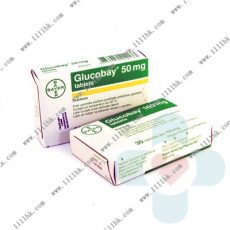
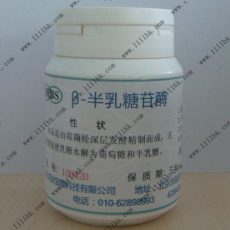
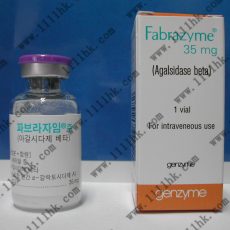
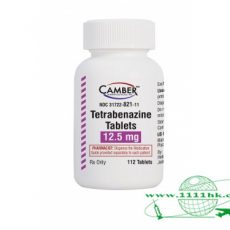
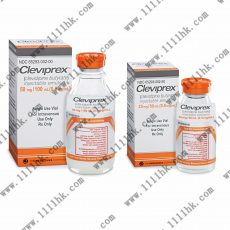
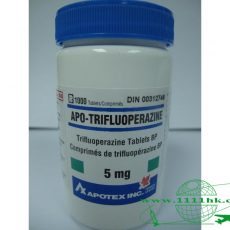
1-230x230.jpg)
